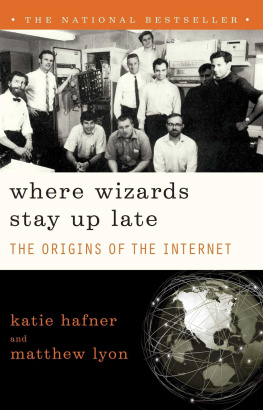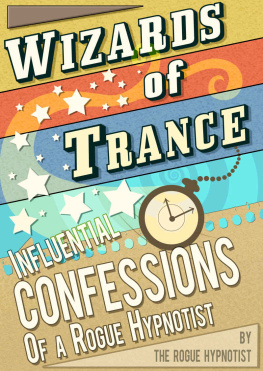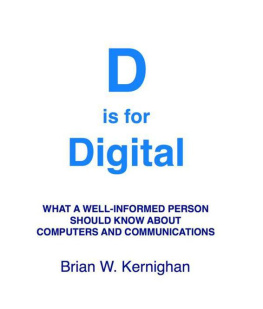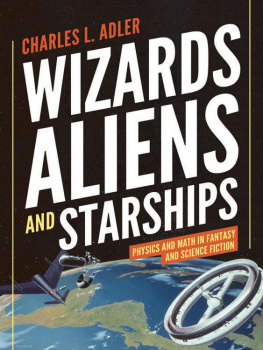WHERE WIZARDS STAY UP LATE
(THE ORIGINS OF THE INTERNET)
Katie Hafner and Matthew Lyon
A DF Books NERDs Release
TOUCHSTONE
Rockefeller Center 1230 Avenue of the Americas New York, NY 10020
Visit us on the World Wide Web: http://www.SimonSays.comCopyright 1996 by Katie Hafner and Matthew Lyon All rights reserved, including the right of reproduction in whole or in part in any form.First Touchstone Edition 1998 TOUCHSTONEand colophon are registered trademarks of Simon & Schuster Inc.Includes index.ISBN 0-684-87216-1
To the memory of J. C. R. Licklider and to the memory of Cary Lu
Also by Katie Hafner The House at the Bridge: A Story of Modern Germany
Cyberpunk: Outlaws and Hackers on the Computer Frontier (with John Markoff)The Origins of the Internet
Katie Hafnerand Matthew Lyon A TOUCHSTONE BOOK Published by Simon & Schuster
Contents
Prologue
1. The Fastest Million Dollars
2. A Block Here, Some Stones There
3. The Third University
4. Head Down in the Bits
5. Do It to It Truett
6. Hacking Away and Hollering
7. E-Mail
8. A Rocket on Our Hands
Epilogue
Chapter Notes
Bibliography
Acknowledgments
Index
Los Alamos lights where wizards stay up late
(Stay in the car, forget the gate)
To save the world or end it, time will tell
James Merrill,
Under Libra: Weights and Measures,
from Braving the Elements
Prologue
September 1994
They came to Boston from as far away as London and Los Angeles, several dozen middle-aged men, reuniting for a fall weekend in 1994 to celebrate what they had done twenty-five years earlier. These were the scientists and engineers who had designed and built theARPANET, the computer network that revolutionized communications and gave rise to the global Internet. They had worked in relative obscurity in the 1960s; a number of them had been only graduate students when they made significant contributions to the network. Others had been mentors. Most of them had never gained much recognition for the achievement.
Bolt Beranek and Newman, a computer company based in Cambridge, had been their center of gravity, had employed many of them, had built and operated the original ARPA network, then slipped into relative obscurity as the Internet grew like a teeming city around its earliest neighborhood. Now, a quarter-century after installing the first network node, BBN had invited all of theARPANETpioneers to come together, hoping to heighten its own profile by throwing a lavish celebration marking the anniversary.
Many of those at the reunion hadnt seen one another or been in touch for years. As they filtered into the lobby of the Copley Plaza for a Friday afternoon press conference kicking off the celebration, they scanned the room for familiar faces.
Bob Taylor, the director of a corporate research facility in Silicon Valley, had come to the party for old times sake, but he was also on a personal mission to correct an inaccuracy of long standing. Rumors had persisted for years that theARPANEThad been built to protect national security in the face of a nuclear attack. It was a myth that had gone unchallenged long enough to become widely accepted as fact.
Taylor had been the young director of the office within the Defense Departments Advanced Research Projects Agency overseeing computer research, and he was the one who had started theARPANET . The project had embodied the most peaceful intentionsto link computers at scientific laboratories across the country so that researchers might share computer resources. Taylor knew theARPANET and its progeny, the Internet, had nothing to do with supporting or surviving warnever did.Yet he felt fairly alone in carrying that knowledge.
Lately, the mainstream press had picked up the grim myth of a nuclear survival scenario and had presented it as an established truth. When Time magazine committed the error, Taylor wrote a letter to the editor, but the magazine didnt print it. The effort to set the record straight was like chasing the wind; Taylor was beginning to feel like a crank.
Across the room at dinner that night at the Copley, Taylor spotted an elderly, heavyset man with a thick mustache. He recognized him immediately as the one person who could convincingly corroborate his story. It was his old boss, Charlie Herzfeld, who had been the director of ARPA when Taylor worked there. The two men had last seen each other years earlier, before anyone else cared about how the network began. Seeing Herzfeld now, Taylor was buoyed. He was back among the people who knew the real story. Now theyd straighten things out.
1 The Fastest Million Dollars
February 1966
Bob Taylor usually drove to work, thirty minutes through the rolling countryside northeast of Washington, over the Potomac River to the Pentagon. There, in the morning, hed pull into one of the vast parking lots and try to put his most-prized possession, a BMW 503, someplace he could remember. There were few if any security checkpoints at the entrances to the Pentagon in 1966. Taylor breezed in wearing his usual attire: sport coat, tie, button-down short-sleeve shirt, and slacks. Thirty thousand other people swarmed through the concourse level daily, in uniform and mufti alike, past the shops and up into the warrens of the enormous building.
Taylors office was on the third floor, the most prestigious level in the Pentagon, near the offices of the secretary of defense and the director of the Advanced Research Projects Agency (ARPA). The offices of the highest-ranking officials in the Pentagon were in the outer, or E-ring. Their suites had views of the river and national monuments. Taylors boss, Charles Herzfeld, the head of ARPA, was among those with a view, in room 3E160. The ARPA director rated the highest symbols of power meted out by the Department of Defense (DOD), right down to the official flags beside his desk. Taylor was director of the Information Processing Techniques Office (IPTO), just a corridor away, an unusually independent section of ARPA charged with supporting the nations most advanced computer research-and-development projects.
The IPTO directors suite, where Taylor hung his coat from 1965 to 1969, was located in the D-ring. What his office lacked in a view was compensated for by its comfort and size. It was a plushly carpeted and richly furnished room with a big desk, a heavy oak conference table, glass-fronted bookcases, comfortable leather chairs, and all the other trappings of rank, which the Pentagon carefully measured out even down to the quality of the ashtrays. (Traveling on military business, Taylor carried the rank of one-star general.) On one wall of his office was a large map of the world; a framed temple rubbing from Thailand hung prominently on another.
Inside the suite, beside Taylors office, was another door leading to a small space referred to as the terminal room. There, side by side, sat three computer terminals, each a different make, each connected to a separate mainframe computer running at three separate sites. There was a modified IBM Selectric typewriter terminal connected to a computer at the Massachusetts Institute of Technology in Cambridge. A Model 33 Teletype terminal, resembling a metal desk with a large noisy typewriter embedded in it, was linked to a computer at the University of California in Berkeley. And another Teletype terminal, a Model 35, was dedicated to a computer in Santa Monica, California, called, cryptically enough, the AN/FSQ 32XD1A, nicknamed the Q-32, a hulking machine built by IBM for the Strategic Air Command. Each of the terminals in Taylors suite was an extension of a different computing environmentdifferent programming languages, operating systems, and the likewithin each of the distant mainframes. Each had a different log-in procedure; Taylor knew them all. But he found it irksome to have to remember which log-in procedure to use for which computer. And it was still more irksome, after he logged in, to be forced to remember which commands belonged to which computing environment. This was a particularly frustrating routine when he was in a hurry, which was most of the time.












